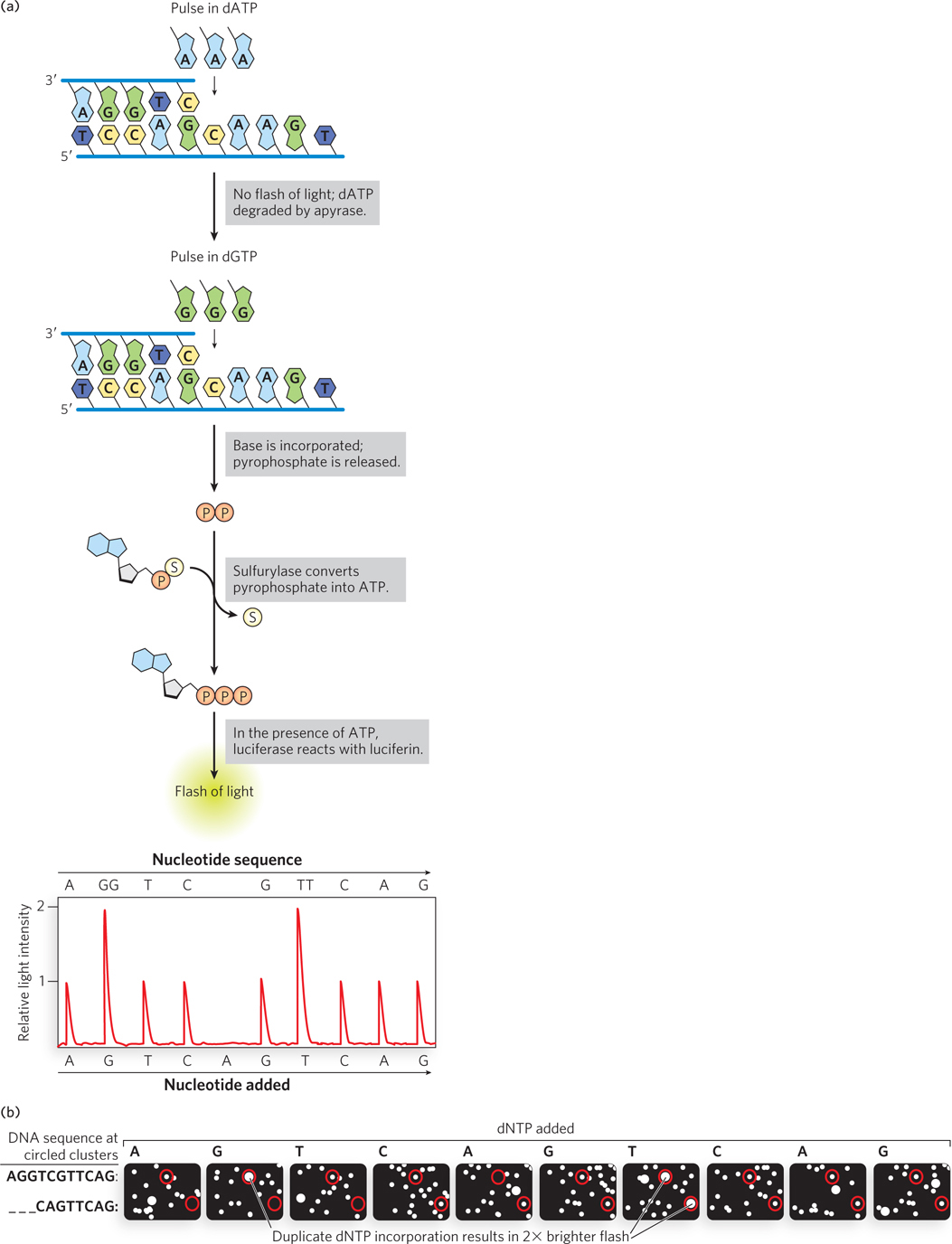
Next- generation pyrosequencing. (a) Pyrosequencing detects the addition of nucleotides on the DNA to be sequenced by flashes of light. (b) An image of a very small part of one cycle of a 454 sequencing run. Each individual segment of template DNA to be sequenced is attached to a tiny DNA capture bead, then amplified on the bead by PCR. Each bead is immersed in an emulsion and placed in a tiny (∼ 29 μm) well on a picotiter plate. The reaction of luciferin and ATP with luciferase produces light flashes when a nucleotide is added to a particular DNA cluster in a particular well. Circles represent the same cluster over multiple cycles. In this case, reading the top (or bottom) circle from left to right across each row gives the sequence for that cluster.